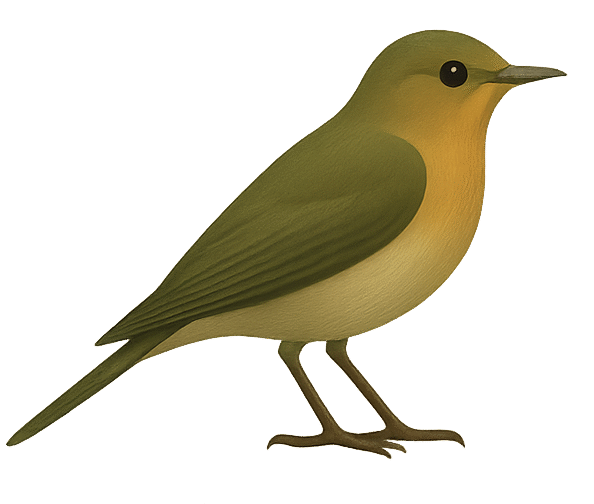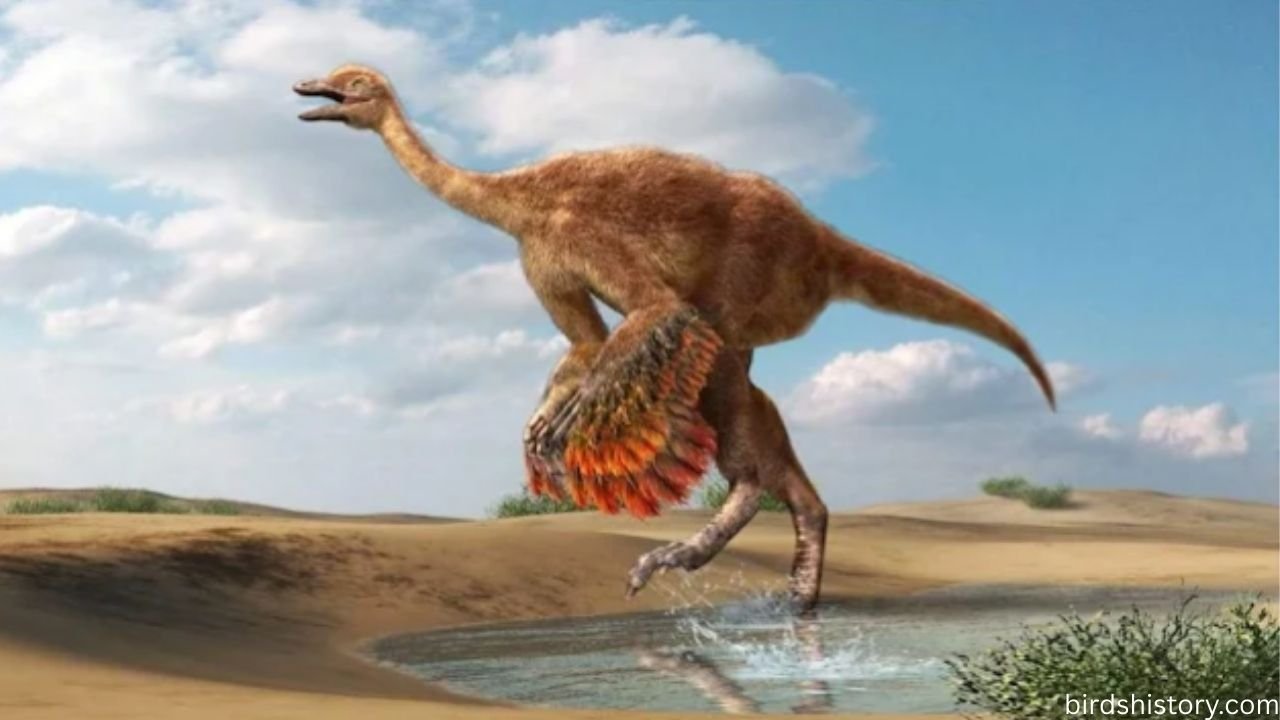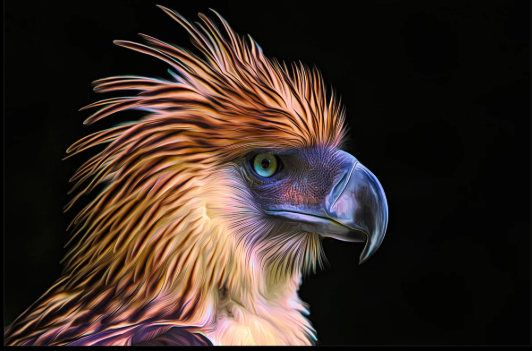The Elephant Bird: Madagascar’s Giant Lost Bird
When you picture the largest bird that ever lived, your mind may jump to the ostrich. But the ostrich, impressive as it is, was no match for the colossal Elephant Bird of Madagascar. These enormous, flightless birds towered over humans, weighed as much as half a ton, and laid eggs bigger than a football.
What makes the Elephant Bird so fascinating is not only its size but also the mystery surrounding its extinction. Native only to Madagascar, this bird disappeared just a few hundred years ago, likely due to human activity. Imagine a creature that combined the scale of a dinosaur with the biology of a modern bird, yet roamed the earth at the same time as medieval kings and explorers.
One of the most surprising facts? Elephant Bird eggs were so huge that a single one could feed an entire family. Some intact eggs still exist in museums today, and they remain among the largest eggs ever discovered.
Let’s take a closer look at this incredible bird, from its scientific classification and physical description to its diet, lifestyle, and legacy.
Taxonomy / Classification
Here’s how the Elephant Bird fits into the scientific classification system:
- Common Name: Elephant Bird
- Scientific Name: Aepyornis maximus (largest species)
- Family: Aepyornithidae
- Order: Aepyornithiformes
- Class: Aves
Also read: /guam-rail/
The Elephant Bird belonged to a family of giant, flightless birds unique to Madagascar. While numerous species existed, the best-known and largest bird believed to have ever lived on Earth is the Aepyornis maximus.
Genetic studies reveal that the Elephant Bird’s closest living relatives are kiwis from New Zealand, even though they lived thousands of miles apart. This fascinating connection shows how ratite birds (a group of large, flightless birds that includes ostriches, emus, and rheas) spread across different continents millions of years ago.
Physical Description
The Elephant Bird was a true giant in the bird world. Here’s what it looked like:
- Height: Up to 3 meters (about 10 feet) tall
- Weight: Between 400–500 kilograms (880–1,100 pounds)
- Coloration: Likely dark brown to black feathers, though some evidence suggests lighter shades depending on the species.
- Beak: Large and heavy, shaped for stripping leaves and fruits rather than tearing flesh.
- Wings: Tiny, vestigial, and completely useless for flight.
- Legs: Thick, powerful, and built to support immense body weight.
- The eggs of the Elephant Bird were huge, measuring as long as 34 cm (13 inches) and able to contain as much as 9 liters of fluid.
To imagine what they looked like, think of a large ostrich, but one with a heavier build, sturdier legs, and a bigger overall body. Unlike ostriches, Elephant Birds were not fast runners; they relied more on size than speed.
It’s probable that sexual dimorphism was present, with females being bigger than males. This trait is common in many flightless birds.
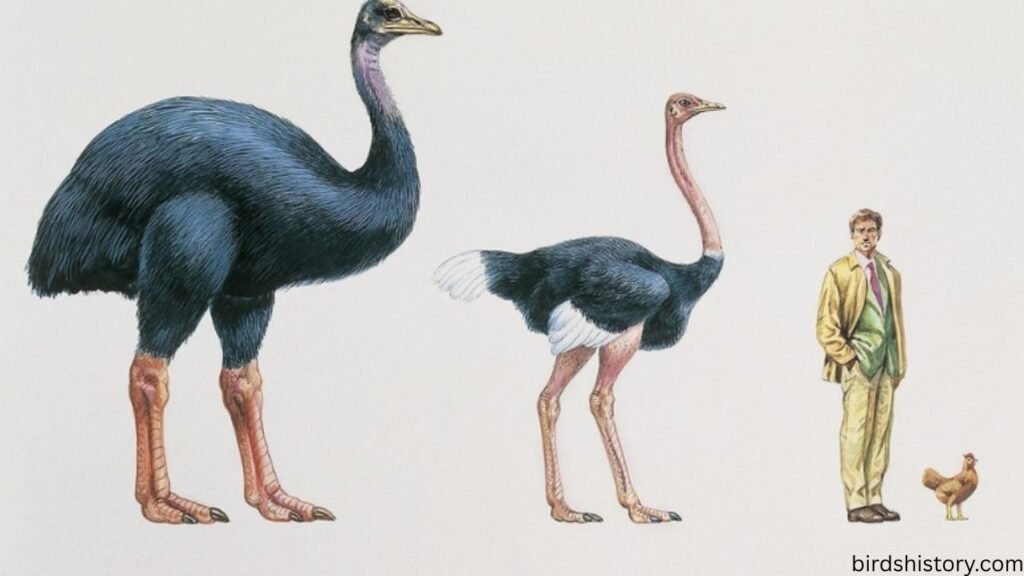
Habitat and Range
Elephant Birds were endemic to Madagascar, meaning they lived nowhere else on Earth. They thrived in diverse environments across the island, including:
- Dense rainforests in the east
- Dry forests and shrublands in the west
- Wetlands in lowland areas
They were adapted to a variety of habitats, feeding on vegetation in both open plains and forested areas. Their large size allowed them to browse higher shrubs, much like giraffes in Africa.
Because Madagascar lacked large land mammals, the Elephant Bird filled a niche similar to that of giant herbivores elsewhere.
Diet and Feeding Habits
The Elephant Bird was a herbivore. Its diet likely included:
- Fruits
- Seeds
- Leaves
- Stems
- Roots
With their strong beaks, they could rip off plants and crush tougher plant matter. They also played a critical role in seed dispersal. Some seeds of Madagascar plants were so large that only a bird of this size could have swallowed and spread them effectively.
Interestingly, scientists believe the extinction of the Elephant Bird may have also impacted plant life on Madagascar, as many trees lost their primary seed disperser.
Behavior and Lifestyle
While direct observation of Elephant Birds is impossible, studies and comparisons with other ratites give us a window into their behavior:
- Social Behavior: Likely lived in small groups or as solitary individuals, depending on habitat and food availability.
- Activity: Probably diurnal (active during the day), spending hours foraging for food.
- Nesting: Ground nesters, laying their massive eggs in open areas or sheltered clearings.
- Calls: Unknown, but given their size, their vocalizations may have been deep, booming sounds that carried over long distances.
- Defensive Behavior: Relied on size to deter predators rather than speed or aggression.
These birds would have dominated the landscape, moving slowly but confidently through Madagascar’s ecosystems.
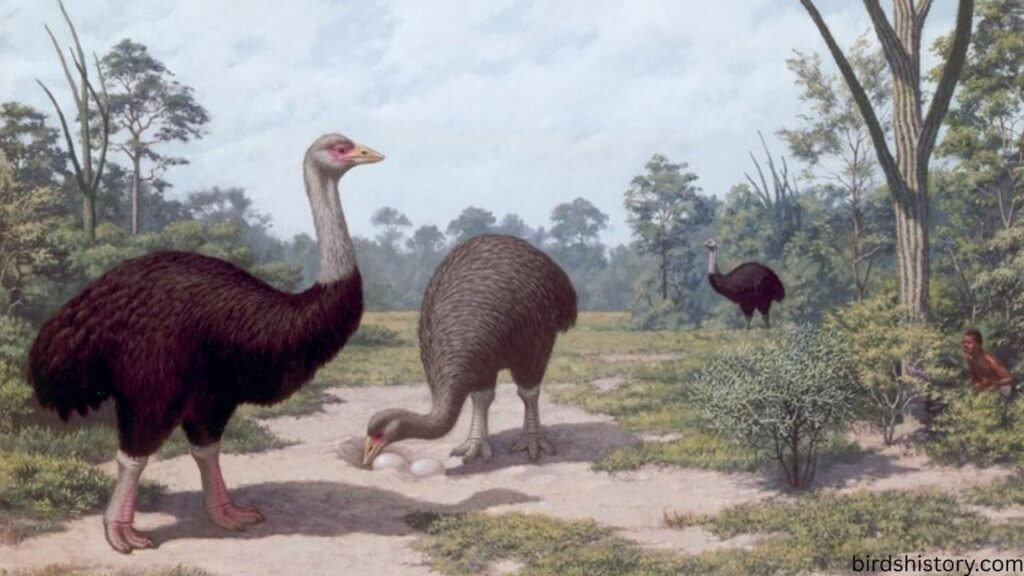
Reproduction and Lifespan
Elephant Birds reproduced slowly, which may have contributed to their extinction.
- Breeding Season: Likely tied to Madagascar’s rainy season, when food was plentiful.
- They constructed simple nests on the ground by scratching them into the soil or sand.
- Eggs: Enormous, up to 34 cm long, weighing over 10 kg.
- Clutch Size: Probably only 1–2 eggs per breeding cycle, like other ratites.
- Parental Care: Males may have incubated eggs, similar to emus and kiwis.
- Lifespan: Estimated at 40–50 years in the wild.
The sheer size of the eggs meant that incubation was a long and energy-intensive process. Combined with low reproduction rates, populations were highly vulnerable to disruption.
Predators and Threats
Natural Predators
Before humans arrived, the Elephant Bird had virtually no natural predators. Its massive size made it nearly untouchable, though eggs and chicks may have been preyed upon by crocodiles or large reptiles.
Human Threats
Humans were the greatest threat to the Elephant Bird. When people arrived in Madagascar about 2,000 years ago, things changed rapidly:
- Overhunting: Elephant Birds were hunted for meat, which could feed many people at once.
- Egg Collection: A single egg could feed a family, making them a valuable resource.
- Deforestation: Forest burning and clearing reduced the birds’ natural habitat.
- Competition: Domesticated animals such as cattle may have competed for vegetation.
Within a few centuries, the Elephant Bird population dwindled dramatically.
Conservation Status
Sadly, the Elephant Bird is extinct.
- IUCN Status: Extinct
- Time of Extinction: Believed to have occurred between the 14th and 17th centuries.
- Evidence: The most recent radiocarbon dating suggests they may have survived until around 1650, overlapping with European explorers.
Although conservation wasn’t a concept in the past, modern scientists study Elephant Bird fossils and eggshells to learn lessons about extinction and biodiversity loss.
Interesting Facts About the Elephant Bird
- Largest Bird Ever: No other bird in history matched its weight.
- Egg Size: An egg was about 160 times the volume of a chicken’s egg.
- Legends: Stories of giant birds in Arab and European folklore, such as the mythical Roc in “Arabian Nights,” may have been inspired by the Elephant Bird.
- Kiwis as Cousins: Despite their tiny size, New Zealand kiwis are the Elephant Bird’s closest living relatives.
- Scientific Discovery: The first intact eggs were discovered in the 19th century, sparking worldwide fascination.
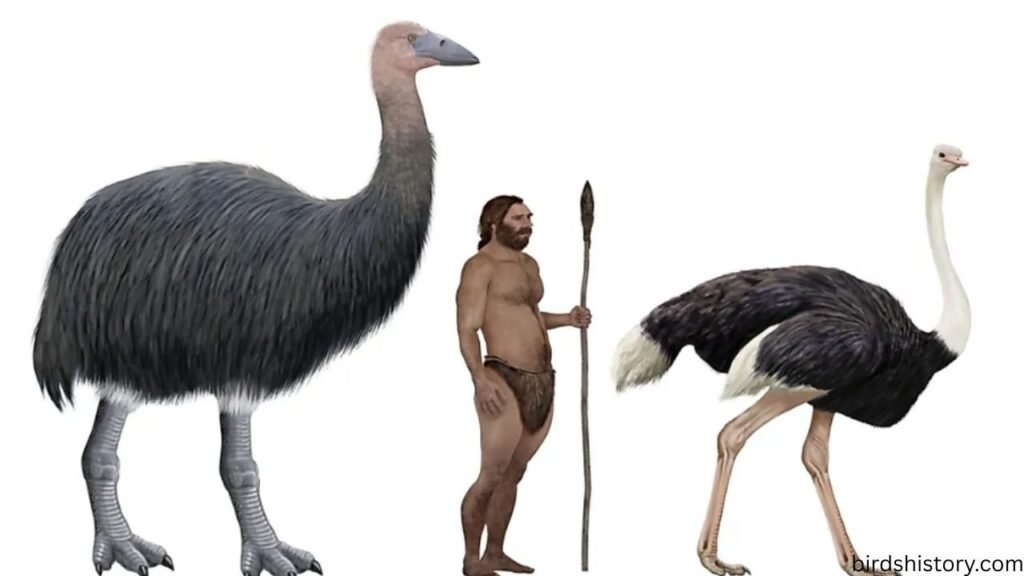
Conclusion
The Elephant Bird is one of nature’s most extraordinary creatures. Towering at 10 feet tall and weighing up to half a ton, it was truly a living giant. Endemic to Madagascar, it shaped ecosystems, dispersed seeds, and inspired legends.
Its extinction serves as a reminder of how quickly human activity can erase even the mightiest of species. While we can’t bring back the Elephant Bird, studying its biology and history helps us understand the delicate balance of ecosystems and why conservation matters today more than ever.
The Elephant Bird may be gone, but its legacy remains as both a wonder of natural history and a cautionary tale.
FAQs
1. What was the Elephant Bird?
The largest bird that ever lived, native to Madagascar.
2. How tall was the Elephant Bird?
Up to 3 meters (10 feet).
3. How much did the Elephant Bird weigh?
Between 400–500 kilograms.
4. Could the Elephant Bird fly?
No, it was completely flightless.
5. What did the Elephant Bird eat?
Fruits, leaves, seeds, and plant matter.
6. When did the Elephant Bird go extinct?
Around the 17th century.
7. Why did it go extinct?
Humans drove them to extinction, mainly through hunting, gathering their eggs, and destroying their natural living spaces.
8. What is the largest egg ever found?
Elephant Bird eggs, up to 34 cm long and holding 9 liters of liquid.
9. Are there any living relatives?
Yes, kiwis from New Zealand are their closest relatives.
10. Can the Elephant Bird be brought back?
De-extinction is being studied, but it’s not possible yet.
